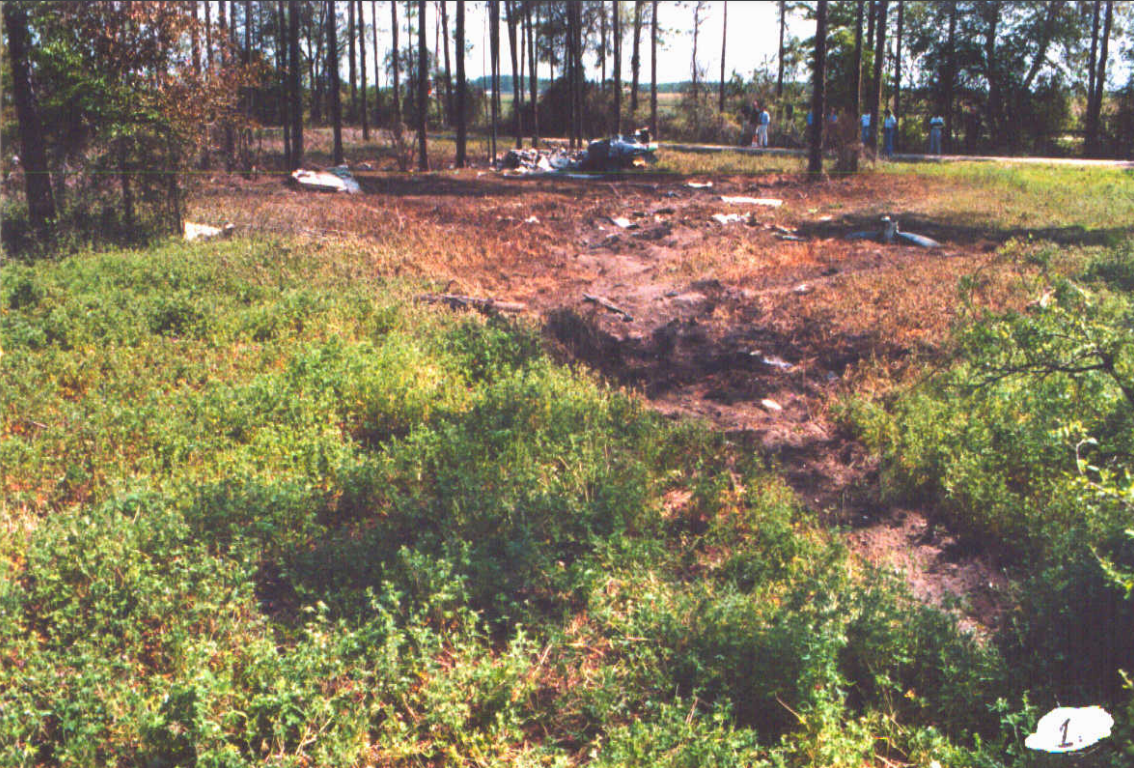
ASN Wikibase Occurrence # 39624
This information is added by users of ASN. Neither ASN nor the Flight Safety Foundation are responsible for the completeness or correctness of this information.
If you feel this information is incomplete or incorrect, you can submit corrected information.
| Date: | Thursday 1 April 1999 |
| Time: | 15:48 |
| Type: |  Piper PA-34-200 Seneca |
| Owner/operator: | Private |
| Registration: | N15478 |
| MSN: | 347350067 |
| Total airframe hrs: | 2650 hours |
| Engine model: | Lycoming IO-360-C1E6 |
| Fatalities: | Fatalities: 1 / Occupants: 1 |
| Aircraft damage: | Destroyed |
| Category: | Accident |
| Location: | Tallahassee International Airport (TLH/KTLH), FL -
 United States of America United States of America
|
| Phase: | Initial climb |
| Nature: | Private |
| Departure airport: | Tallahassee International Airport, FL (KTLH) |
| Memphis, TN | |
| Investigating agency: | NTSB |
| Confidence Rating: |
On April 1,1999, at 1548 eastern standard time, a Piper PA-34-200, N15478, collided with the ground during takeoff from runway 27 at the Tallahassee International Airport in Tallahassee, Florida. The personal flight was operated by the pilot under the provisions of Title 14 CFR Part 91 with a visual flight rules (VFR) flight plan filed. Visual weather conditions prevailed at the time of the accident. The airplane was destroyed and there was a post-impact fire. The pilot was fatally injured. The accident occurred during the takeoff from Tallahassee, Florida; the flight was en route to Memphis, Tennessee.
The pilot of another airplane, while taxiing for takeoff, observed the accident airplane during the initial climb out. The airplane was observed in a right 45-degree bank, the nose of the airplane was up about 30 degrees and the airplane appeared to have stalled. At approximately the same time, the pilot radioed and reported that he was having a problem and wanted to return; the pilot never stated the problem. The airplane suddenly started losing altitude and just before colliding with the ground, the airplane was last observed in a 20 to 30 degree right bank, and a 50 to 60 degree nose-down attitude. Seconds later, a fireball was observed in the vicinity where the airplane was last seen. The fuselage assembly received heavy fire damage. The center section of the airframe and the cockpit area was fire damaged. The subsequent examination of the engine and airframe assemblies failed to reveal a mechanical problem or component failure.
Probable Cause: The pilot's failure to maintain flying speed during initial climb which resulted in a stall and uncontrolled collision with terrain.
Accident investigation:
 |
|
Sources:
NTSB: https://www.ntsb.gov/_layouts/ntsb.aviation/brief.aspx?ev_id=20001205X00415&key=1
Images:


Photos: NTSB
Revision history:
| Date/time | Contributor | Updates |
|---|---|---|
| 24-Oct-2008 10:30 | ASN archive | Added |
| 21-Dec-2016 19:23 | ASN Update Bot | Updated [Time, Damage, Category, Investigating agency] |
| 26-Nov-2017 12:37 | ASN Update Bot | Updated [Operator, Departure airport, Source, Narrative] |
| 13-Oct-2022 08:16 | Captain Adam | Updated [Aircraft type, Location, Phase, Departure airport, Narrative, Accident report, Photo] |
| 13-Oct-2022 08:17 | Captain Adam | Updated [Photo] |
Corrections or additions? ... Edit this accident description
The Aviation Safety Network is an exclusive service provided by:


 ©2024 Flight Safety Foundation
©2024 Flight Safety Foundation